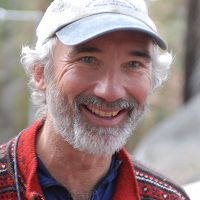Chorover et al., 2012
Critical Zone Observatories (CZOs): Integrating measurements and models of Earth surface processes to improve prediction of landscape structure, function and evolution (Invited)
Chorover J., Anderson S. P., Bales R. C., Duffy C., Scatena F. N., Sparks D. L., White T. (2012)
Abstract GCS4A-05 presented at 2012 Fall Meeting, AGU, San Francisco, Calif., 3-7 Dec (Talk) Cross-CZO National
-
Catalina-Jemez, INVESTIGATOR
-
Boulder, INVESTIGATOR
-
Sierra, INVESTIGATOR
-
Shale Hills, INVESTIGATOR
-
Luquillo, INVESTIGATOR
-
Christina, INVESTIGATOR
-
National, Shale Hills, INVESTIGATOR, STAFF
Abstract
The “Critical Zone” - that portion of Earth’s land surface that extends from the outer periphery of the vegetation canopy to the lower limit of circulating groundwater - has evolved in response to climatic and tectonic forcing throughout Earth’s history, but human activities have recently emerged as a major agent of change as well. With funding from NSF, a network of currently six CZOs is being developed in the U.S. to provide infrastructure, data and models that facilitate understanding the evolution, structure, and function of this zone at watershed to grain scales. Each CZO is motivated by a unique set of hypotheses proposed by a specific investigator team, but coordination of cross-site activities is also leading to integration of a common set of multi-disciplinary tools and approaches for cross-site syntheses. The resulting harmonized four-dimensional datasets are intended to facilitate community-wide exploration of process couplings among hydrology, ecology, soil science, geochemistry and geomorphology across the larger (network-scale) parameter space. Such an approach enables testing of the generalizability of findings at a given site, and also of emergent hypotheses conceived independently of an original CZO investigator team. This two-pronged method for developing a network of individual CZOs across a range of watershed systems is now yielding novel observations and models that resolve mechanisms for Critical Zone change occurring on geological to hydrologic time-scales. For example, recent advances include improved understanding of (i) how mass and energy flux as modulated by ecosystem exchange transforms bedrock to structured, soil-mantled and/or erosive landscapes, (ii) how long-term evolution of landscape structure affects event-based hydrologic and biogeochemical response at pore to catchment scales, (iii) how complementary isotopic measurements can be used to resolve pathways and time scales of water and solute transport from canopy to stream, and (iv) how feedbacks between the Critical Zone, changing climate and changing land use are occurring on timescales relevant to human decisions and policy making. URL:
www.criticalzone.org
Citation
Chorover J., Anderson S. P., Bales R. C., Duffy C., Scatena F. N., Sparks D. L., White T. (2012): Critical Zone Observatories (CZOs): Integrating measurements and models of Earth surface processes to improve prediction of landscape structure, function and evolution (Invited). Abstract GCS4A-05 presented at 2012 Fall Meeting, AGU, San Francisco, Calif., 3-7 Dec (Talk).
 This Paper/Book acknowledges NSF CZO grant support.
This Paper/Book acknowledges NSF CZO grant support.
Explore Further







